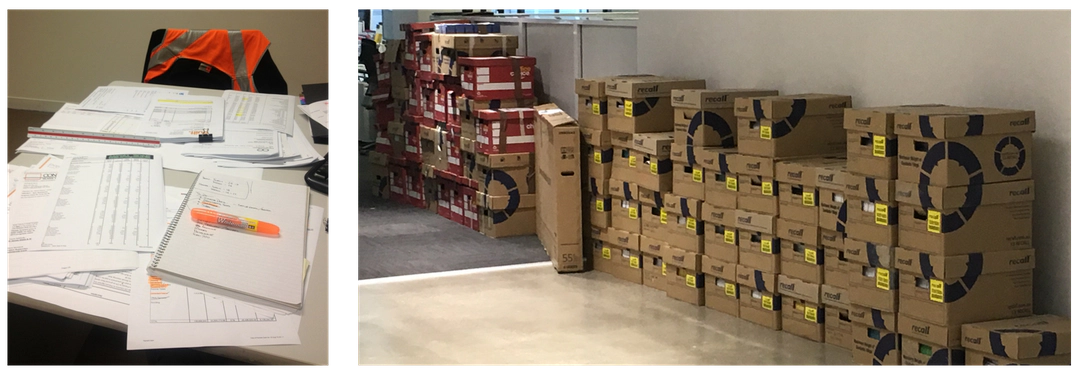AN INDUSTRY READY FOR CHANGE
This piece was written for S.R. Clarke & Associates, a construction industry executive search firm, by Lauren Brookes, a writer based in Colorado. The content she writes focuses on career and workforce issues in the construction industry.

While technological advancement is rapidly expanding in the construction world, many companies are still conducting business in a similar way they did decades ago. In a 2017 global survey conducted by KPMG, findings showed that even though 72% of the engineering and construction executives surveyed stated that technological innovation played a role in their vision, less than half had a clear strategy in place to integrate those advancements.
Additionally, only 5% of respondents considered themselves on the forefront of embracing these advancements, while the majority stated that they were industry followers instead of leaders.
What these numbers showcase is that construction executives and leaders are aware of the value and necessity of integrating technology with their business models, but most haven’t taken actionable steps to make doing so a reality. As illustrated, only a minority of firms seem eager to take the reins and lead the industry into an era of digital technology and information.
Read below a few reasons on how embracing technology can benefit your organisation.
REDUCE ONSITE ACCIDENTS
Construction is continually noted as one of the most dangerous professions, so naturally, the need for improved onsite safety for workers is an ongoing conversation. The good news is that technology is helping the industry become much less dangerous.
Drones are becoming an increasingly popular tool in the construction industry, and when used efficiently, they can complete some tasks that are dangerous to workers. They can survey and record data of locations that could be hazardous for workers to scout, such as unexplored locations or areas that are difficult to reach or navigate. They allow project supervisors to oversee projects in real time, allowing for stronger oversight and more efficient surveillance.
Wearables
Smart devices that attach to either the worker or in protective gear, such as helmets, vests, boots and glasses are becoming more common. These devices can help track biometrics, environmental factors and physical locations (GPS).
Devices can track a worker’s vitals and alert them if they are in physical danger and if the worker suffers an injury, a supervisor can track their location easily to provide care.
Some wearables even offer the person wearing them the ability to hit an emergency alert button if they need help. This will help prevent workplace injuries as well as streamline potential crisis management.
It’s estimated that 250 million wearables will be used this year, and that number is predicted to more than double by 2021. Needless to say, the outlook of construction-site safety is looking positive, and getting on board with new technological developments can help the industry be safer and thus, more attractive to future workers.
EXPERIENCE BETTER ORGANISED PROJECTS
The growing skills gap between baby boomers and millennials is a ubiquitous discussion point in the construction industry. Few millennials are entering construction; only 7.3% of construction workers were between the ages of 20 and 24 in 2015, which was down from 10.7% in 2005. The disinterest from the younger generation is occurring at a time when many baby boomers are heading toward retirement, leaving many executives feeling concerned about who will keep the industry going and take over senior level roles.
While there are various ways to attract millennials to construction careers, embracing technology is an important place to start. In order to lure in this demographic that has grown up with and become dependent on technology, it’s important that your business isn’t functioning in a different era.
Millennials are used to being able to quickly access information and documents, and they are accustomed to having instant feedback and communication. In a survey commissioned by Microsoft, 93% of millennials surveyed stated that having the most modern technology played a role when choosing employers.
It’s not realistic to think that younger workers would choose a career where feedback is delayed and most processes are conducted manually, which is why adopting innovative technology will make the industry more attractive to those who will be responsible for keeping it progressing.
STAY COMPETITIVE
Incorporating technology trends, or at least taking the steps to construct a clear blueprint of how to do so in the future, will help your business stay ahead of the curve instead of falling behind your competition.
Embracing technology will clearly benefit your construction company now and in the future. While immediately incorporating the most cutting-edge breakthroughs may not be realistic for financial or logistical reasons, you can always start somewhere. Taking small steps now will help you better strategize bigger changes later on.
The future is in technology, and doing everything in your means to push the industry forward, will help your business goals and the construction industry as a whole.







